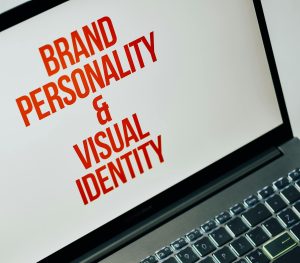Constructing Brand Symbols: The 5 Paths

Today, we are going to learn about the concept of “brand symbols.”
Recently, there was a company that gained tremendous attention for adopting a long name: “Baoji has a group of young dreamers who believe that under Uncle Niu’s leadership, they will create miracles in life Network Technology Co., Ltd.” It went viral overnight on social media. You might think, is this a method to gain brand awareness? Should you consider doing something similar? If yes, how?
To address the question of “what to do,” we must first understand the essence of the problem.
The name mentioned earlier is indeed interesting, but now I’ll give you 30 seconds to try and say the name out loud. Ready, go… Can’t say it, can you? You can’t say it because you can’t remember it. Although this name is unique, you would still remember simple names like Apple, Wahaha, or Coca-Cola.
The essence of this problem lies in how to name a brand.
Concept: Brand Symbols
The renowned strategic marketing company “Hua and Hua” introduced the theory of “brand symbols,” suggesting that building a brand is essentially constructing a symbol that identifies your product, condenses your value, and encourages consumers to buy and recommend. This symbol can be a word, a graphic, or even a sound. A good brand symbol should be easy to remember and spread.
So, what makes a good brand symbol? And what doesn’t?
Hua and Hua, in the book “Super Symbols are Super Creativity,” provided a vivid example. Two villas, “West Suburb Manor,” and “Lanqiao Santa Fe.” “West Suburb Manor” is a good symbol because it’s clear and easy to understand. On the other hand, “Lanqiao Santa Fe” isn’t, because in less than half a minute, you probably can’t explain which four characters make up the name—it’s not easy to remember or spread.
Spending money to create a quirky brand symbol and then spending even more to explain it is a classic case of having too much money and not knowing how to spend it.
Application: Constructing Brand Symbols – The 5 Paths
So, how can you design good brand symbols? Today, we will learn the five paths summarized by Hua and Hua: “Constructing Brand Symbols.”
1.Visual Symbols:
For example, “Sanjing Oral Liquid, the one in the blue bottle.” The blue bottle is the visual symbol for Sanjing Oral Liquid. Whenever you see the blue bottle, you think of Sanjing, and vice versa.
Another example is the three stripes on sportswear. When you see them, you think of Adidas. These three stripes are Adidas’ visual symbol.
Visual symbols like the ice cool pieces in Colgate Ice Cool toothpaste or the blue active particles in Tide detergent are not about the ice coolness or the activity. They are visual symbols to identify, remember, and spread. When designing visual symbols, remember not to give them too much meaning, like “jianjia” (an unfamiliar term). Consumers don’t have a voiceover when buying products, and no baritone actor is there to recite poetry like “Jianjia Cangcang, bai lu wei shuang” (the grass is luxuriant, and white dew falls as frost).
2.Auditory Symbols:
Have you ever noticed that Xiaomi’s default ringtone hasn’t changed since Xiaomi 6? Apple, Huawei, and Nokia also have their unforgettable default ringtones.
This is an auditory symbol. With Xiaomi having hundreds of millions of users, every time a phone rings, it’s a reminder that this person is using a Xiaomi phone.
Catchy slogans in advertisements, like Intel’s “Ding! Waiting for the light!” or shouting “TianQi” when taking a photo, also leave a lasting impression.
Promotional slogans that are easy to say, such as “Rentouma opens, good luck naturally comes,” make you blurt it out when you open a bottle of Rentouma. Another example is “Xibei Miancun, close your eyes and order, every dish is delicious.” When someone asks if Xibei Miancun is good, you might instinctively respond with “Close your eyes and order, every dish is delicious,” instead of reciting “The silent snow falls thinly and gracefully, leaving the plate empty.”
3.Olfactory, Gustatory, and Tactile Symbols:
Symbols related to smell, taste, and touch are not as widely used as visual and auditory symbols, but they are still everywhere.
High-end hotels often have specially designed fragrances, creating a pleasant aroma when you walk in. Cosmetic sections in department stores are known for their enticing scents. Starbucks stores are filled with the aroma of freshly brewed coffee. These are olfactory symbols.
Symbolic tastes, like the unforgettable flavor of Kangshifu Braised Beef Noodles, make it hard to forget. Opening a bottle of Lao Gan Ma abroad brings the familiar taste that can’t be replaced. These are gustatory symbols.
Touch symbols include the feeling of cotton on tissues, the smooth and cool touch of an Hermes product, or the soft and warm touch of an Erdos product.
Easy to remember and easy to spread. Have you mastered the 5 paths to construct brand symbols?







